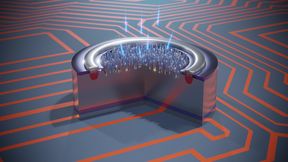Defence of doctoral thesis in the field of Micro- and nanosciences, M.Sc.(Tech.) Juha Heinonen

When
Where
Event language(s)
M.Sc.(Tech.) Juha Heinonen will defend the thesis "High-sensitivity photodiodes using black silicon and induced junction" on 22 April 2022 at 12 in Aalto University School of Electrical Engineering, Department of Electronics and Nanoengineering, in lecture hall TU1, Maarintie 8, Espoo, and online in Zoom.
Opponent: Dr. Fabio Acerbi, Fondazione Bruno Kessler, Italy
Custos: Prof. Hele Savin, Aalto University School of Electrical Engineering, Department of Electronics and Nanoengineering
The public defense will be organized via remote technology. Follow defence: https://aalto.zoom.us/j/63452113530
Zoom Quick Guide: https://www.aalto.fi/en/services/zoom-quick-guide
Thesis available for public display at: https://aaltodoc.aalto.fi/doc_public/eonly/riiputus/
Doctoral theses in the School of Electrical Engineering: https://aaltodoc.aalto.fi/handle/123456789/53
Press release:
Some type of light detection is needed in a very diverse spectrum of modern-day electronic devices ranging from simple toys to the most complicated scientific instruments and usually silicon photodiodes act as the eyes of those devices. For decades, the core technologies behind silicon photodiodes have remained the same: anti-reflective coating is used to suppress reflections and the diode is generated by adding dopants to silicon. Unfortunately, these technologies set fundamental limitations to the photodiode performance. Anti-reflective coatings are effective only at a single wavelength and incidence angle, and dopants cause electrical losses.
This thesis introduces a new photodiode concept overcoming these limitations. Instead of anti-reflective coating, black silicon, i.e., nanostructured silicon, is utilized to effectively suppress reflections at a wide range of wavelengths and incidence angles. The use of dopants is avoided by inducing the diode with negatively charged atomic layer deposited aluminium oxide film conformally covering the black silicon. The resulting photodiodes exhibit light detection efficiency close to ideal at wavelengths covering ultraviolet, visible and near-infrared light. On the other hand, dark current of the photodiodes is seen to behave similarly than in conventional photodiodes. Since dark current sets the measurement noise level, the higher light detection efficiency should translate directly into higher signal-to-noise ratio.
The radiation hardness of the photodiodes against proton and electron irradiation is also studied. The results suggest that induced junction photodiodes are more stable against ionizing electron irradiation than conventional photodiodes. This indicates that, in addition to better light detection efficiency, the studied black silicon induced junction photodiodes can achieve better durability and longer operation lifetime in harsh conditions.
Contact information:
| [email protected] | |
| Phone | 0415452606 |
- Published:
- Updated: